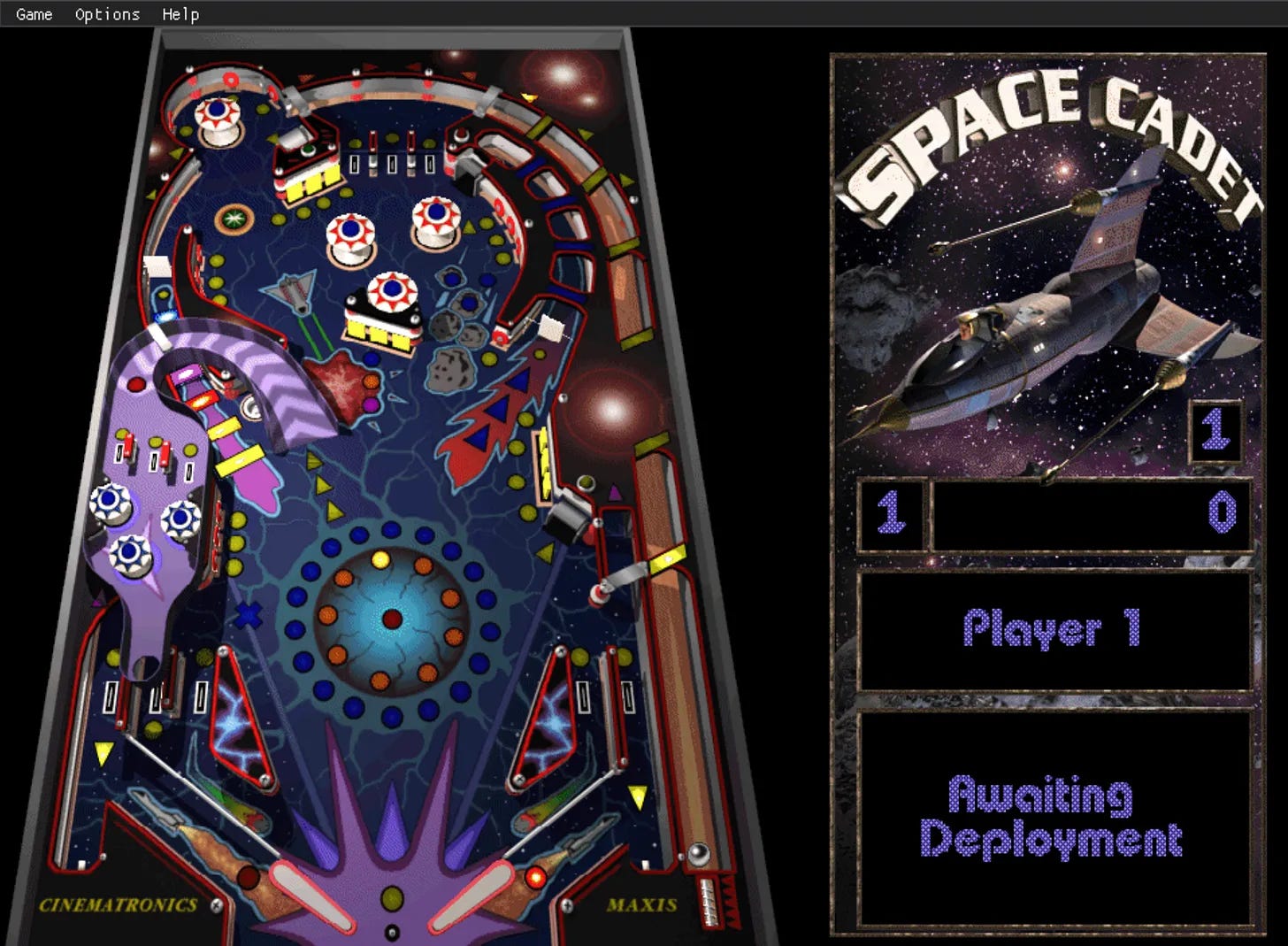Space Cadet 3D Pinball: The Making of a Cult Classic
Behind the flippers and bumpers of the iconic game that came bundled with Windows 95
In 1994, just months after graduating from UC Santa Cruz, I walked into my first job at a small game development studio called Cinematronics in Santa Cruz,
California. My job? Help build what would eventually become one of the most beloved and oddly enduring computer games of the late '90s: 3D Pinball for Windows – Space Cadet.
At the time, Doom had just burst onto the scene, and gritty, pixel-heavy concept art was in high demand. I landed the gig with some hand-drawn sketches in that style—soon I’d be building a game that Microsoft would bundle with Windows 95 and distribute to millions of computers worldwide.
From Concept to Cabinet (Sort of)
The driving force behind the project was David Stafford, founder of Cinematronics and our executive producer. Stafford had developed a file compression algorithm that impressed Microsoft, leading to a relationship that opened the door for us to pitch a game that could show off their shiny new Windows platform. That project became Full Tilt! Pinball, which featured three tables: Skulduggery, Dragon’s Keep, and the now-iconic Space Cadet.
Microsoft eventually chose Space Cadet as a standalone game to be bundled with Windows 95 (and later, Windows NT 4.0), giving it a reach far beyond our expectations.
Field Research, '90s Style
To get the design right, our small team went analog. I grabbed a film camera—yes, actual film—and headed to the Santa Cruz Beach Boardwalk, where the arcade was still packed with classic pinball machines. We photographed tables from every angle and played a ton of games, taking mental (and physical) notes on lighting, table structure, and user experience.
We started modeling using Caligari TrueSpace, a consumer-grade 3D program, but quickly ran into issues with precision. We pivoted to a DOS-based 3D modeling tool that gave us better control, letting me build the table’s core structures—bumpers, flippers, ramps—using geometric primitives and extrusions.
Creating Space in Photoshop
The final look was what you might call “fake 3D.” We rendered 3D models, but the game itself was a top-down 2D engine using pre-rendered 3D sprites. All assets were created in Adobe Photoshop, and memory efficiency was a top priority: everything used a 256-color dithered palette. Lighting elements were created as multi-state GIFs (on/off, hit/not-hit), with special care taken to make animations as seamless as possible despite tight resolution constraints.
Code and Physics
Initial development was done in Delphi, then later ported to C/C++ when Microsoft signed on. The physics engine, written by Mike Sandige, was data-driven and highly customizable via a scripting system that allowed fine-tuning of object behaviors. Kevin Gliner, our product manager, handled the scoring logic and layout, doing deep research into the evolution of physical pinball tables to make the layout and flow feel intuitive.
One major constraint? No on-table text—because the game needed to be easily localized for global use, everything had to be visual.
A Legacy that Won’t Tilt
While the full Full Tilt! release included three tables, Space Cadet stole the show. PC Gamer gave it an 86%, praising the immersive graphics and sound. Over time, the standalone version became a staple on school computers and home desktops, often remembered alongside Solitaire and Minesweeper.
Even today, fans keep it alive: YouTube tutorials explain how to run the game on modern machines, and nostalgic players still share high scores and mods.
And Then Came Lil Uzi Vert
In a surprising twist of cultural relevance, Space Cadet got sampled in Lil Uzi Vert’s 2020 track "You Better Move", featured on his album Eternal Atake. The song incorporated sound effects from the game and captured the attention of fans who had grown up with Space Cadet bouncing around on their screens.
Final Score
Looking back, the game’s success wasn’t inevitable—it was the product of tight constraints, experimental workflows, and a team of determined creatives making the most of the tools they had. It was never about building the most complex game. It was about building a pinball machine that could live inside a 1990s desktop—and somehow, 30 years later, inside our memories.
Thanks for playing.
💬 Social Media Snippets
1.
Ever wonder how 3D Pinball: Space Cadet ended up on every Windows 95 machine? I was there when it was made—and yes, I shot photos of real pinball machines on a film camera.
🛸 Full story here → [link]
2.
Before Space Cadet became a pop culture icon (and Lil Uzi Vert sample), it was just me, Photoshop, and a DOS 3D modeling tool in a Santa Cruz garage studio.
🎮 Read the making-of → [link]
3.
“Can’t include ANY text.” That was one of Microsoft’s rules when we built 3D Pinball: Space Cadet for Windows 95.
Why? Localization. How? Pure graphics.
👾 Go behind the flippers → [link]


